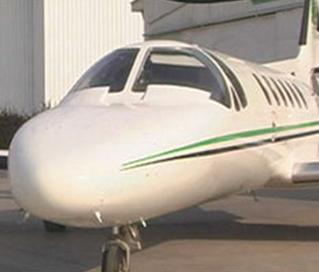Can a patient that is connected to a mechanical ventilator be transported?
A company that specializes in critical patient’s transportation has the staff, equipment and procedures that allow transporting critical patients on mechanical ventilation, catheters, vasoactive drugs. The Movicare team contacts the physician to evaluate the clinical condition and the authorization for transportation. In some cases the clinical condition does not allow the transfer and is postponed until stabilization.
Can a premature new born be transported?
Yes. Specialized neonatal care Doctors and Nurses and protocols that are defined according to the severity, days of life and gestational age at birth allow Movicare to offer your child the highest standards of safety for transportation.
Can a critical patient be transported in any type of ambulance?
No. They can only be transported in advanced emergency ambulances (AEA). These are highly complex ambulances authorized by the Ministry of Health to transport critical patients and they have medical staff, nursing and specialized equipment. Critical patients CANNOT be transported in ordinary ambulances (ATS), because they do not have the staffing, equipment or ministerial accreditation.
My father is going to be transferred by plane from Antofagasta to Santiago, can I accompany him?
The MOVICARE coordination team will evaluate the patient’s clinical case, and, depending on the result, will get in touch with you to inform if you can or cannot to travel with the patient.
If I accompany the patient during the transfer, what are my obligations?
In the event that you may accompany the patient during the trip, you are responsible for:
a. The maximum luggage should be the size of a handbag, maximum weight 10 Kg, only for carrying your basic personal belongings.
b. The accompanied family member that will perform the patient’s admission to the medical center must carry the patient’s valid identification card.
c. You must complete and sign the “Family Companion Regulations " form which acknowledges the associated risks and precautions to be taken during the flight.
Is it possible to transport a patient by air to and from Punta Arenas?
Yes, but purely for safety reasons, night flights for this route are not recommended, because the only emergency airport from Punta Arenas is Puerto Montt.
The alternatives Calafate, Puerto Natales and Balmaceda airports only operate during the day, which in case of an emergency do not give landing alternatives.
Our suggestion is, if the patient’s conditions permit, is to wait for the next day and depart during daytime.
How do you define if a patient can be transported in a high complexity ground ambulance or with an air ambulance?
The Movicare team collaborates with the treating physician and the family to define the appropriate transportation according to the distances and the clinical condition. A high complexity ambulance may be used for distances less than 500Km. For critical patients, an air ambulance will be used for transportation from La Serena, Los Angeles, Concepcion and Chillan.
What types of air ambulances exist?
There are 2 types of air ambulances: Turboprop and jet aircrafts. Both have similar intensive care equipment, a specialized medical and nursing team, they are pressurized and require authorization to operate as air ambulance.
The only difference is the velocity, as in extreme distances (Arica o Coyhaique), can mean a 1 hour difference of flight time with the patient. Example:
Comparing between a Turboprop and a Jet to Temuco, there is a transfer time difference of 16 minutes.
Comparing between a Turboprop and a Jet to Puerto Montt, there is a transfer time difference of 35 minutes.
How do you select the aircraft to be used for a transfer?
As for medical equipment and relevant aeronautical characteristics for the transportation of patients, the different aircrafts are the same. The only major difference is the flight velocity.
The Jet is faster.
For critical patients, the transportation time can be a determining factor, however the speed differences are only important for long distances, the time table shows the flight times between Santiago and different cities by jet and by turboprop aircrafts:
See Transportation timetable for Northern and Southern area.
Is it possible to transport patients to and from abroad on international flights?
In Movicare in addition to transfers within Chile, we offer an international ambulance service, our operations base is located in Santiago de Chile, which allows us to transport patients within South America and including the Falkland Islands (Malvinas) on our Jet aircraft, the service is from bed to bed.
Our coordination department will take care of managing the air and land services by establishing direct communication with the family, medical personnel, insurance companies, ambulances and all the parties involved at pick-up and arrival to assure a safe, comprehensive and quality service.
All patients are transferable?
No. There are patients that due to the severity of their illness cannot be transported. The transfer of a patient, just like any other medical procedure, is not exempt of risks. The medical team decides when the potential benefits for the patient are greater than the risks associated.
Pre-Mortem or very critical patients (example: Active massive cerebral hemorrhages, maximum handling refractory respiratory failure, presence of non drained pneumothorax, uncompensated septic shock and maximum refractory hemodynamic management) cannot be moved because of the very high risk of their precarious deterioration condition.
The decision not to make a transfer due to the associated risk and patients’ severity is taken jointly between the medical treating team, the medical transfer team and the specialists who would receive the patient at the destination medical center.







